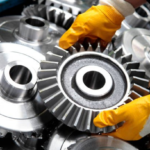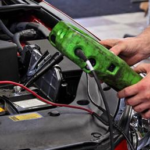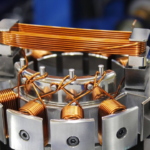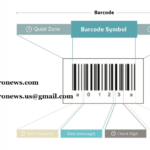Quality and accuracy are vital in welding. MIG and TIG welding are common welding techniques that join metal pieces together using an electric arc. Some defects can arise during and after the welding process as a result of human error or using incorrect welding parameters. These defects weaken the weldment, increase the cost of reworking, and are not physically appealing.
Before using TIG and MIG welding techniques, there are some defects you should know. Prevention and early detection are key to ensuring quality and compliance with industry standards. This article will explain what MIG and TIG defects are, the twelve most common defects you can encounter, and how to prevent them.
What are MIG and TIG Welding Defects
MIG vs TIG welding defects are irregularities or flaws that occur during the welding process. They result in a different weld bead quality, shape, or size from the intended one. These defects can affect aesthetic appeal and how well the final part functions.
Though used interchangeably, weld discontinuities are not the same as weld defects. Weld discontinuities are a break in the consistency or continuity of the weld. However, a defect causes the weldment to be unable to meet specifications and is outside the acceptable limits.
Furthermore, certain ISO standards define the quality of a weldment. ISO 6520 classifies the various types of welding defects while ISO 5817 analyzes the weld acceptance criteria.
Categories of MIG and TIG Welding Defects
You can classify MIG and TIG welding defects based on where they occur on the metal sheet. The two main categories are internal and external welding defects.
MIG and TIG External Welding Defects
External defects are those that occur on the weld surface that you can easily see with the naked eye or with minimal magnification. Examples of external TIG and MIG welding defects are porosity, spatter, and cracks.
MIG and TIG Internal Welding Defects
Internal welding defects happen beyond the surface and are usually not visible. You have to use advanced techniques such as destructive examination to detect it. Incomplete fusion and penetration are common examples of internal TIG and MIG welding defects.
Common Mig and Tig Welding Defects
The process of welding metal sheets using TIG and MIG techniques may result in defects if not properly managed. The following are some common welding defects and how you can prevent them
Porosity
Porosity occurs when gasses such as hydrogen and oxygen become trapped in the welded joint as it cools and solidifies. When the gas escapes, it leaves small and visible holes, voids, and cavities in the metal sheet. Porosity affects the integrity of the metal and weakens it over time. Porosity comes in four forms: wormholes, distributed porosity, surface pores, and crater pipes.
Causes
Contamination with paint, rust, and grease can react with the weld pool and form gasses.
Using too little or too much shielding gas.
Improper positioning of the MIG torch.
High welding speed and insufficient heat input can lead to gas entrapment.
The presence of moisture in the weld bead can cause steam and lead to gas bubbles.
Solutions
Proper cleaning and preparation of the sheet metal before welding.
Using adequate shielding gas coverage.
Maintain a controlled environment and keep welding tools and equipment dry.
Use correct welding speed and optimize heat input.
Weld Cracks
Cracks are one of the most serious TIG and MIG welding defects as they continue to increase in length with time. It is like a fracture with a sharp tip. Based on its location relative to the weld direction, it can either occur transversely or longitudinally. Cracks that form during the solidification and cooling stage are known as hot cracks. However, those that occur hours or days after welding are called cold cracks.
Causes
High concentration of internal stress in the weld and base metals.
Inadequate preheating before welding.
Hydrogen shielding gas gets absorbed and causes embrittlement with ferrous metals.
Excessive heat input and rapid cooling rate.
Welding at a high speed.
Solutions
Optimize welding parameters.
Allow the weld joint to cool slowly at room temperature.
Preheating the base metal leads to the formation of molecular bonds and prevents cracking.
Prioritize helium as the shielding gas, especially with ferrous metals.
Use proper width-to-depth weld ratio.
Weld Crater
A weld crater is also called a ‘crater pipe’ or ‘crater porosity’. It is an oval-shaped or rounded cavity that is not filled in with the full cross-section of the weld joint. A weld crater is a type of crack weld that occurs at the end of a weld bead. Note that it can also occur as a shallow depression if the weld pool is small.
Causes
Suddenly terminating the arc at the end of the weld bead before switching off the current.
Insufficient filler metal especially in MIG welding.
Improper welding speed and touch angle.
Solutions
Adjust the speed during the sheet metal welding process.
Operate the TIG touch at a 15-degree angle or less in the direction of the weld.
Properly fill the crater and reduce heat input gradually before terminating the arc.
Burn Through
Burn-through is a common TIG and MIG welding defect. It occurs mostly with metal sheets that are ⅛ an inch thick or lesser. Here, the electric arc burns through the base metal as a result of excessive heat. This leaves an open hole in the finished weld joint.
Causes
Using higher than required wire feed speed.
Applying too much heat to the weld area.
Using metal sheets that are too thin for the process.
Solutions
Use a lower voltage when working with aluminum or other metals that are susceptible to heat buildup.
Reduce the root gap between the base metals.
Incomplete Fusion
Incomplete fusion occurs when the final weld does not fuse completely with the base metal. This leaves spaces in the weld zone and affects the part’s functionality.
Causes
Improper positioning of the welding gun.
High heat input and travel speed.
Rapidly cooling the weld joint.
Using a large-sized electrode.
Solutions
Place the welding gun at a proper angle.
Optimize welding parameters according to the base metal properties.
The size of the electrode should match the thickness of the workpiece.
Distortion
Distortion occurs when the base metals do not retain their original shape as a result of uneven heating and cooling. This defect occurs more with thinner sheets because they may not dissipate heat adequately. Unwanted expansion and contraction result in stress which can cause the metal to shrink, bend, or curl.
Causes
Excessive heating can alter the mechanical properties of the metal and change the microstructure.
Rapid cooling results in shrinkage.
Unwanted vibrations cause the base metals to move and distort.
Overwelding and using large weld sizes.
Solutions
Reduce welding time and minimize the number of passes.
Use a smaller weld size.
Always use clamps during welding.
Cool the weld joint slowly.
Whiskers
Whiskers are remnants of electrode wires that stick out of the weld joint or are contained within it. These protrusions are short-length, visible, and not aesthetically appealing. Whiskers can also affect the functionality of the final part. It weakens the joints and obstructs liquid flow when used in piping systems.
Causes
Feeding in the electrode wire at a fast pace.
Moving the welding torch too quickly.
Solutions
Optimize and maintain proper travel speed and feed rate.
Spatter
Weld spatter is more common with MIG welding. It occurs when minute droplets of molten metal splash or spray away from the weld pool. These droplets can land on the base metal, floor, and surrounding areas. As they cool, they form metal beads and make the metal surface rough. Spatter can be removed manually by grinding with abrasive materials which adds to the total welding costs.
Causes
Uncontrolled welding current can cause the electrode to melt rapidly.
Too low voltage and too high amperage settings.
Inadequate gas shielding and flow rate.
Unstable arc and sudden change in wire feed speed.
Solutions
Use suitable shielding gas and maintain the flow rate.
Adjust welding parameters.
Ensure the current is flowing at a constant rate.
Undercut
Undercuts are another common MIG and TIG welding defect. It forms a groove on the base metal along the weld’s toe. The groove is parallel to the weld metal and can occur on one or both sides. Undercuts can compromise the strength of the final part. Additionally, the grooves serve as a home for contaminants to build up with time. Undercuts can be continuous, intermediate, or inter-run.
Causes
Higher than required welding current.
Welding too fast without filling the zone with liquid metal.
Welding haphazardly and not in a straight line.
Using the wrong electrode angle and long arc length.
Solutions
Use proper voltage or current.
Reduce the arc distance and use the right electrode angle.
Weld at a constant and required speed.
Use the right filler metal and monitor welding parameters throughout the process.
Incomplete Penetration
Incomplete penetration is also known as lack of penetration. It occurs when the weld metal does not extend downwards to completely penetrate the joint thickness. Here, just the upper part of the base metal fuses together leaving a shallow hole on the opposite side. Incomplete penetration is a potential failure as it weakens the weld.
Causes
Insufficient heat input and low current.
Rapid travel speed.
Improper joint design and alignment.
Leaving too much space between the base metals before welding.
Solutions
Do not weld faster than required.
Ensure optimal distance between the base metals.
Proper joint design and alignment.
Use a current and heat that is enough tmelt the weld metal.
Discoloration
Discoloration is common with TIG welding. It occurs when the metal absorbs oxygen on the surface. The oxygen gas reacts and forms oxides which change the color of the weld. Lighter discoloration may be acceptable but darker ones may not pass quality inspection.
Causes
Inadequate use of shielding gas to protect the weld pool
Contaminated surfaces can react and produce oxides.
Applying excessive heat can increase the risk of discoloration.
Solutions
Proper cleaning and preparation of the metal before melting.
Use enough gas coverage.
Optimize heat input based on the workpiece material.
Overlap
Overlap is a serious problem in MIG and TIG welding. It happens when the weld metal solidifies and protrudes beyond the weld toe. The filler material spreads out and a portion doesn’t bond with that base metal. Overlap impairs quality and weakens the joint.
Causes
Using higher than required electric current is the most common cause of overlap.
Inadequate preparation of base metal.
Incorrect angle of the filler material.
Using too large an electrode size.
Solutions
Ensure the travel speed is moderate and does not exceed the limit.
Use proper electrode angle.
Optimize the size of the filler metal.
Conclusion
When welding defects have occurred, it is important to use various means to analyze the extent of the damage. You can physically inspect surface porosity, overlaps, and surface cracks. For others, use nondestructive testing techniques such as magnetic particle, ultrasonic, and radiographic inspections to get a clear picture. Note that not all weld defects can be repaired. Repairing involves grinding to a smooth finish or chipping out the defective weld. You then carefully weld all over again.





























































































w69u0i